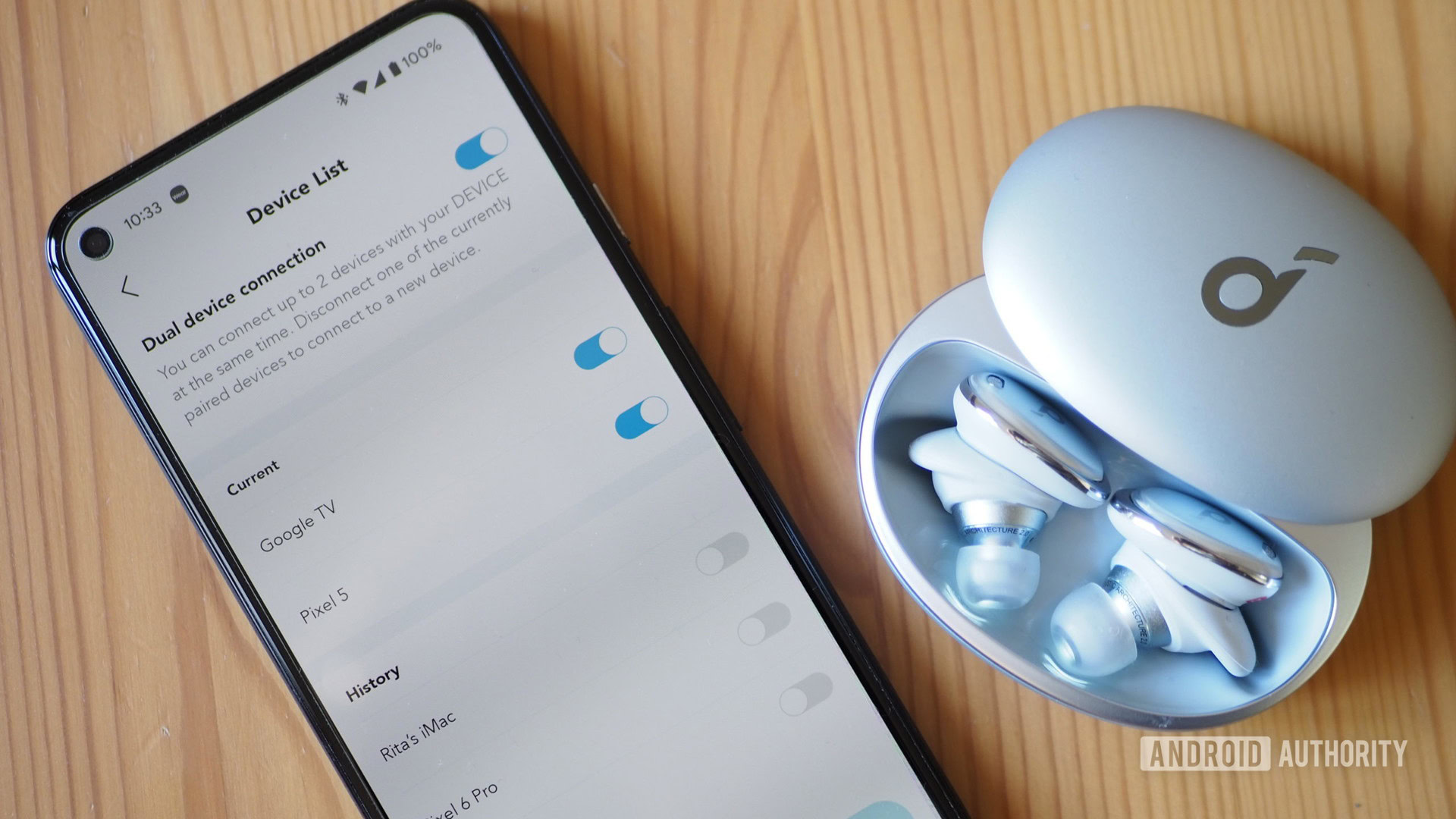Affiliate links on Android Authority may earn us a commission. Learn more.
Every Bluetooth headset should have this setting
Published onNovember 10, 2021

Everyone who has fully embraced Apple’s ecosystem has probably forgotten about the woes of using Bluetooth for audio. Despite it being the most universal way to connect accessories to our phones, it’s finicky and far from an ideal solution. In our Android-centric world, we would love to use one Bluetooth headset with all of our devices, but more often than not, we have to choose.
Best case scenario, I can connect my headset with my computer and phone simultaneously, and make sure it’s also been paired to my tablet, my TV, and my secondary phone should I want to listen there. The reality, though, is that I can rarely control which of these my headset will decide to connect to at any time, and I have to spend a minute turning things off and on to ensure it picked the one I want.
For a while, my solution to avoid this entire mess was to have multiple Bluetooth headsets — the Marshall Monitor II for my computer and iPad, the SoundCore Liberty Air 2 Pro for my main phone, and whatever I happened to be testing at the time would be connected to the TV and my secondary phone. You can imagine how fun it was to juggle these when switching between them. But at least I didn’t have to deal with the opacity of Bluetooth and whatever its paired and preferred devices were.
Check out: Our headphone buying guide
That was until I got the SoundCore Liberty 3 Pro ($170) and delved into its Android app. I discovered a section dedicated to the devices it has been paired to. I could see the two most recent ones, plus those that weren’t active right then. (The Liberty 3 Pro supports Bluetooth Multipoint, so it can be actively connected to two different devices at the same time.) A simple toggle lets me turn off one of the active devices and connect to another. Brilliant. It also allows me to trigger pairing to a new device too.
The app interface completely changes how I interact with my Bluetooth headset, transforming a normally opaque process into a transparent and quickly configurable one. Disconnect from this, connect to that; it’s as simple as a toggle. I can keep the same pair of buds in my ears, paired to my computer and phone, then disable one and switch to my tablet or TV when needed. And when I’m done, switch back.
Disconnect from this, connect to that; it's as simple as a toggle.
After this discovery, I went digging into my mid-sized collection of Bluetooth headphones and true wireless buds to see if this feature has always been there but I’ve missed it. Turns out it’s not as unique as I thought, but not as widespread either. Like SoundCore, both Bose and Sony offer this, but only for their Bluetooth headsets that support Multipoint. Sennheiser and Poly make it available even for headsets that can only connect to one device at a time. And Marshall doesn’t seem to support this functionality at all. I couldn’t test all brands of headphones or wireless buds, but I’m sure it’s a mixed bag out there.
Of course, this is still a long way off from making the Bluetooth experience as seamless as it is when using Apple’s AirPods with Apple devices, but it’s as close as we can get now. I’d love to see this interface become a standard for all Bluetooth headphones and buds — and potentially all Bluetooth accessories you might pair with multiple devices, like keyboards or mice. A visual UI will always, always trump a shot in the dark, which is what Bluetooth connections have been for years. The fact that this isn’t a requirement yet gives me pause, but if more of the major brands join the fray, adoption will hopefully grow.